Everyone knows about Africa’s Big 5 animals: lion, leopard, rhino, elephant and Cape buffalo. But few know that Canada has its own collection of large mammals that are every bit as awe-inspiring as their African counterparts. In fact, it’s arguably a whole lot harder to see a polar bear, grizzly bear, moose, wolf and plains buffalo in the wild, which makes checking them off your bucket list that much more satisfying. Here’s a primer on Canada’s Big 5 and where to find them.
Polar Bears: The True Kings in the North
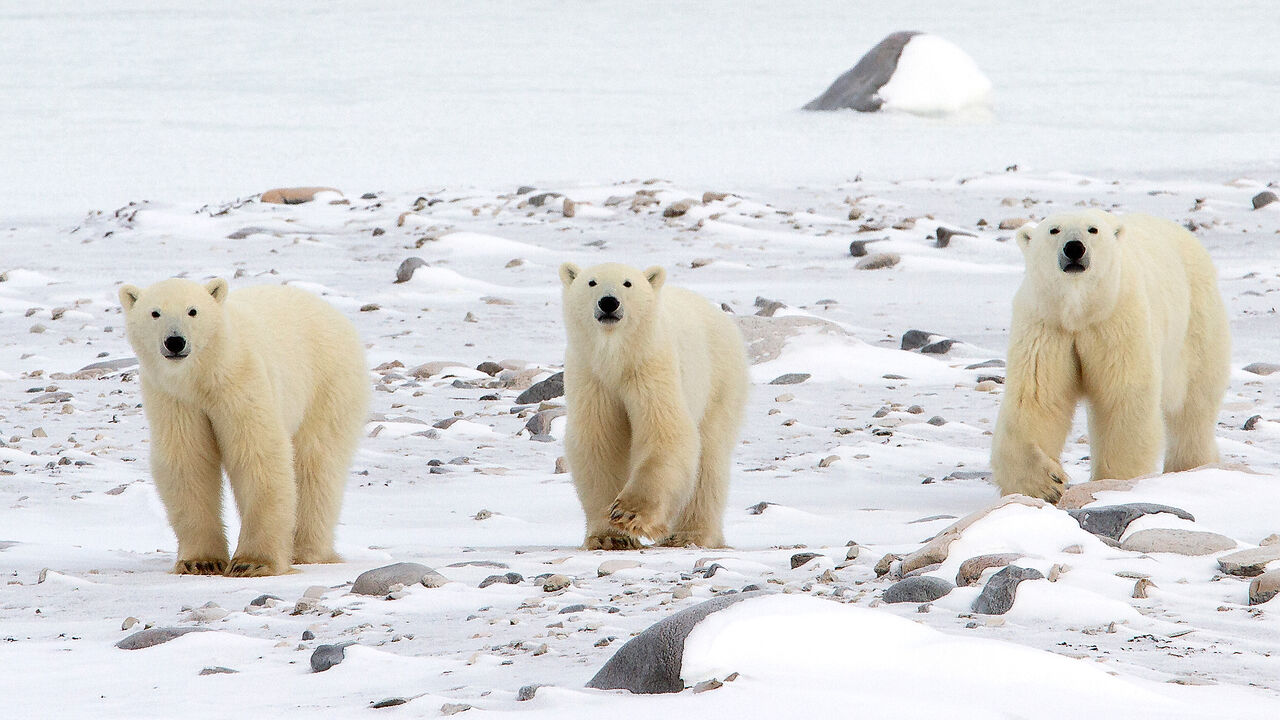
Weighing between 350 and 700 kg (770 to 1,545 lbs) for a full-grown male, the world’s largest species of bear has adapted perfectly to his Arctic home at the top of the world. His yellowish-white fur camouflages him in the frozen landscape, he can swim for great distances in ice-cold water, and his preferred meal is seals, which he hunts all winter long while roaming across shelves of frozen sea ice.
Nearly two-thirds of the planet’s polar bears live in Canada’s far north, and it’s possible to see them in all of the provinces and territories that border the Arctic Circle. Your best chance for a sighting is to travel to Churchill, Manitoba in the fall, when hundreds of polar bears gather along the shore of Hudson Bay in October and November. They patiently wait for the water to freeze over so the annual seal hunt can begin.
Fun fact: The polar bear is featured on one side of Canada’s biggest coin, the $2 toonie.
Watch for polar bears on the Polar Bear Photography Safari.
Grizzly Bears: This Symbol of Canadian Wilderness Calls B.C. Home
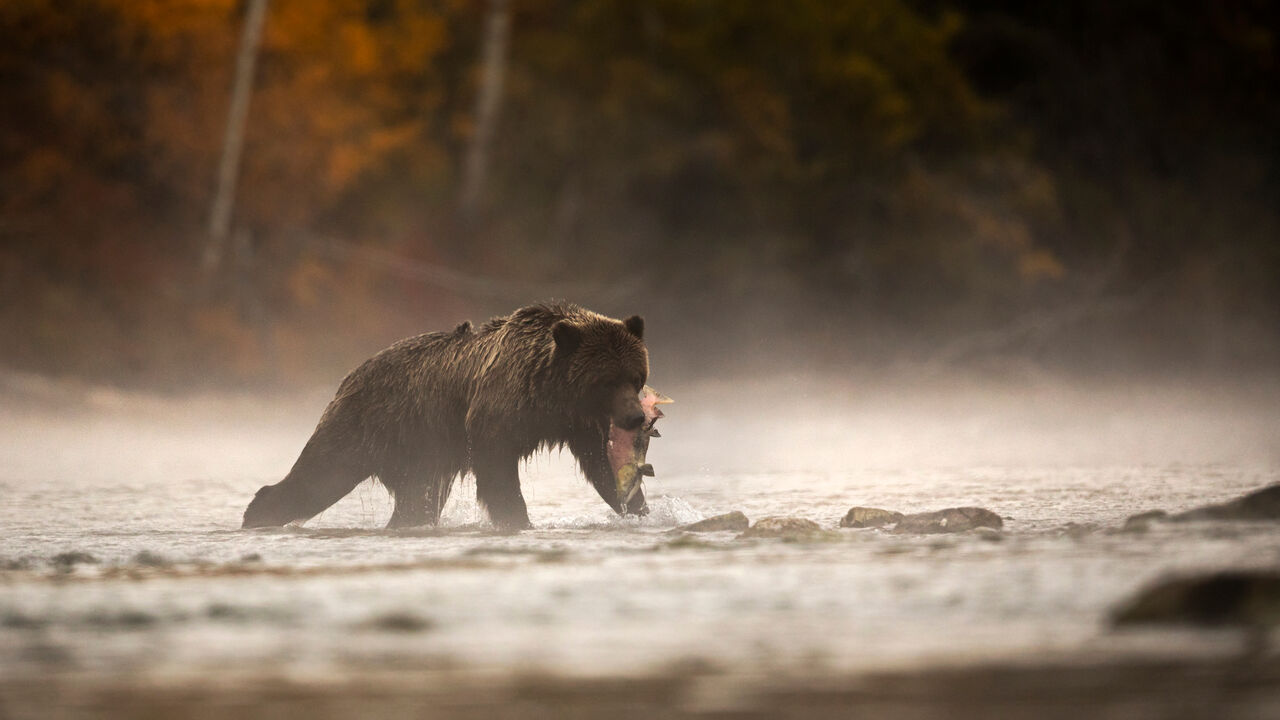
With their long claws, well-muscled shoulders, ability to outrun a horse, and large size (over two metres tall when standing!), hikers worry about running into a grizzly bear in the backcountry. But even though an estimated 15,000 grizzly bears live in B.C., your odds of having a chance encounter with one of these omnivorous creatures while trekking in the Canadian Rockies or B.C.’s Coast Mountains are actually pretty slim.
To guarantee a sighting, travel to the B.C. coast in the fall during the salmon run, when the annual return of the fish to their spawning grounds means a smorgasbord for the bears. Grizzlies congregate by rivers to catch an easy meal, and you can watch the spectacle from the safety of a guided boat.
Fun fact: Their Latin name, Ursus arctos horriblis, means horrible or gruesome bear, but the grizzly in their name more likely refers to their grey-tipped fur, which appears grizzled.
Watch for grizzly bears on the Nimmo Bay Wilderness Retreat.
Moose: Beasts of the Boreal Forest
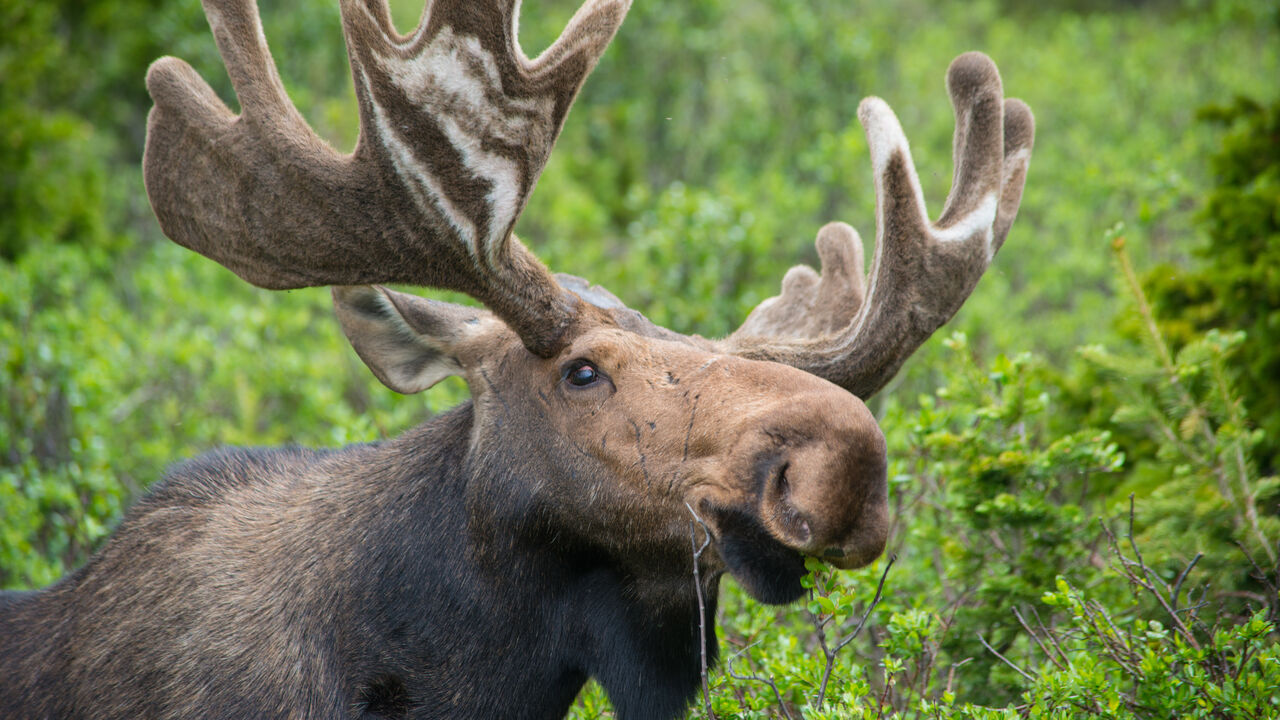
You’ll recognize the largest member of the deer family by his long, goofy face and distinctive antlers that are the envy of chandeliers everywhere (those of bull moose can span 1.8 metres!). He towers two metres tall at the shoulder and his long limbs make him look clumsy, but this stately ungulate is adept at navigating dense forests and marshy waters chock-a-block with cattails. He’s also an impressive swimmer and can dive to the lake bottom to eat plants growing there.
You can see moose almost everywhere in Canada, from Vancouver Island to Newfoundland. Look for them near ponds and lakes, or foraging for food on the side of the road in the Canadian Rockies.
Fun fact: You can buy ‘Moose Droppings’ — a.k.a. chocolate-covered almonds — at many souvenir shops in Canada.
Watch for moose on the Luxury Glamping on Clayoquot Sound experience.
Bison: These Majestic Prairie Dwellers are Making a Comeback
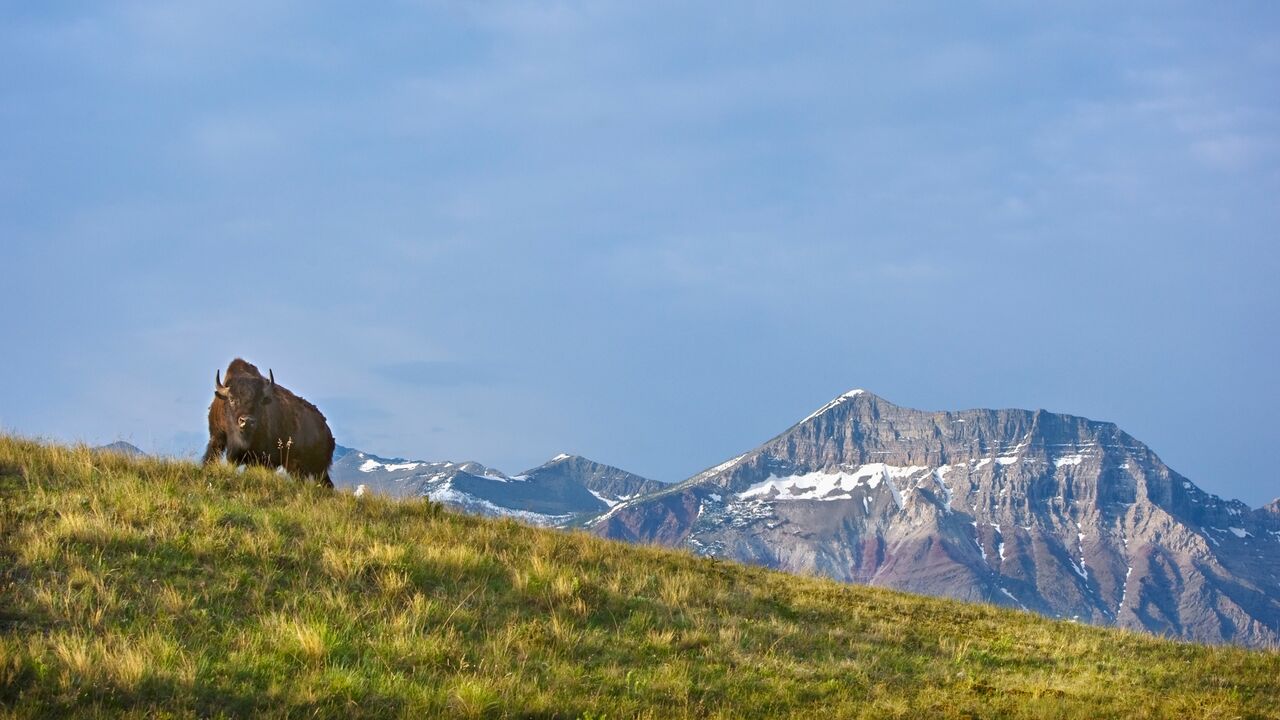
With massive woolly heads that are out of all proportion to their short legs and small, cloven hooves, you can’t miss a plains bison (not to be mistaken for a smaller wood bison). Canada’s largest land mammal weighs up to 900 kg (1,985 lbs) and can sustain short sprints of 96 kilometres per hour (60 mph). In the early 1800s there were close to 60 million bison thundering across the prairie from Alberta to Ontario, but over-hunting and habitat loss caused their numbers to plummet to a mere 300 by the end of the century.
Plains bison are slowly making a comeback, with a herd of 31 reintroduced to the remote Panther and Red Deer valleys of Banff National Park in 2018. You can also see a captive herd in Riding Mountain National Park, Manitoba.
Fun fact: Bison were an important source of food, material and tools for many of Canada’s First Nations.
Watch for bison on the First Class Canadian Rockies experience.
Wolf: This Pack Animal’s Howl is the Original Call of the Wild
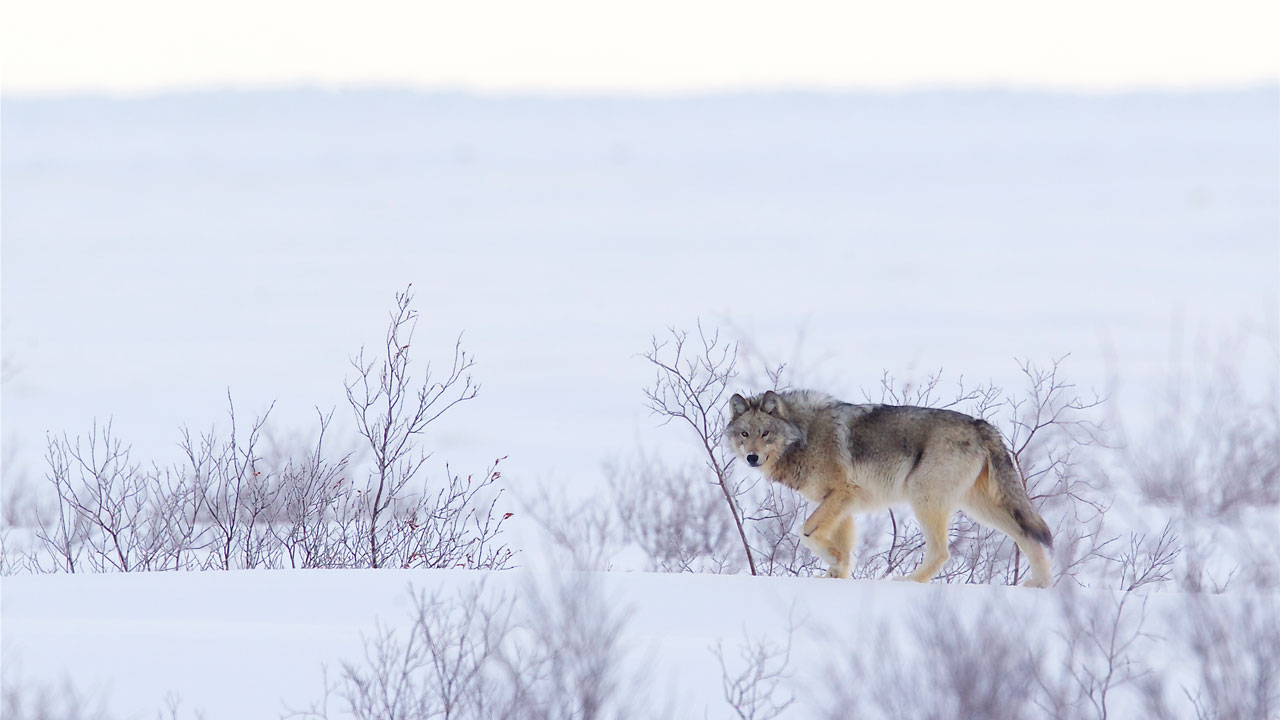
They look like large German shepherds with grey coats, and can even be mistaken for coyotes, so it’s hard to know if you’ve actually seen a wolf. A better indication is to rely on your ears — the lonesome, chilling sound of a wolf howl (how the social pack animals communicate over long distances) — is a sure sign you’re in wolf country.
Join a tour in Jasper National Park to track wolves in the wild, or visit the Northern Lights Wildlife Wolf Centre in Golden, B.C. to learn about the elegant predators and photograph and walk with them in a controlled environment.
Fun fact: The mythical dire wolf from Game of Thrones was actually a real animal that roamed North America over 10,000 years ago and is a close relative of today’s grey wolf.
Watch for wolf on the High Fly-in Mountain Retreat.
Five More Classic Canadian Critters
Beaver
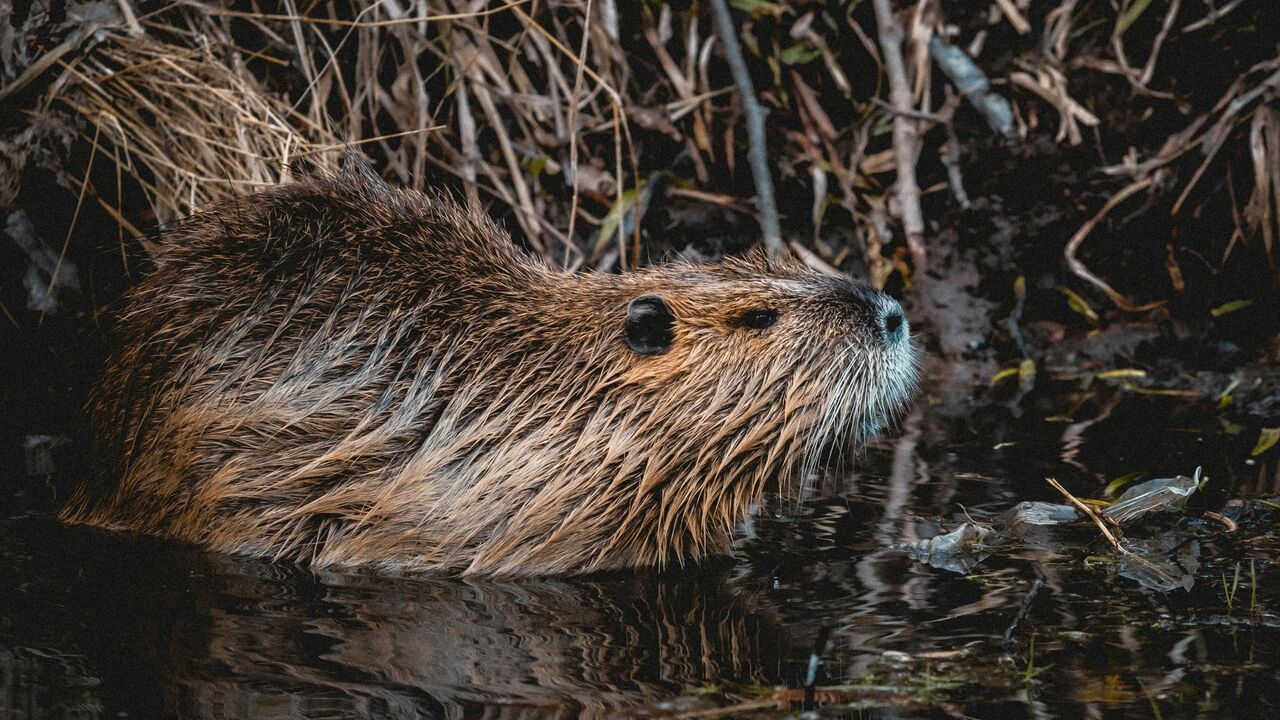
Canada’s largest rodent has come to symbolize the country, thanks to its tireless industriousness (we focus on the engineering of dams, not the destruction of trees!). The toothsome critter is even memorialized on the nickel. Look for these adept swimmers at dusk in lakes — the Beaver Boardwalk in Jasper National Park is a good place to start.
Watch for beaver at the Siwash Lake Wilderness Ranch.
Beluga Whale
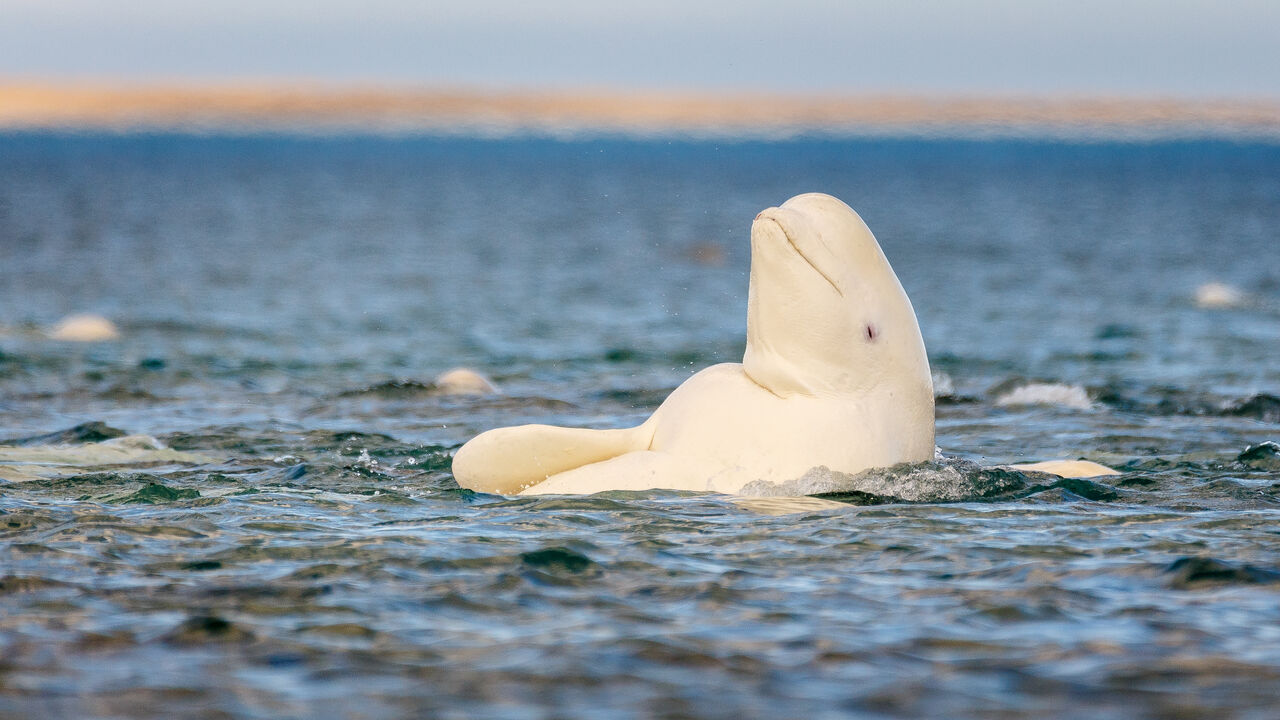
These small, curious whales seem to wear a perpetual grin as they swim in the St. Lawrence Seaway, Hudson Bay and Arctic Ocean. Two-thirds of the world’s beluga population summers in Canadian waters, and your best chance to kayak next to a pod is by visiting Somerset Island in July or August.
Watch for beluga whales on the Arctic Watch Safari.
Puffin
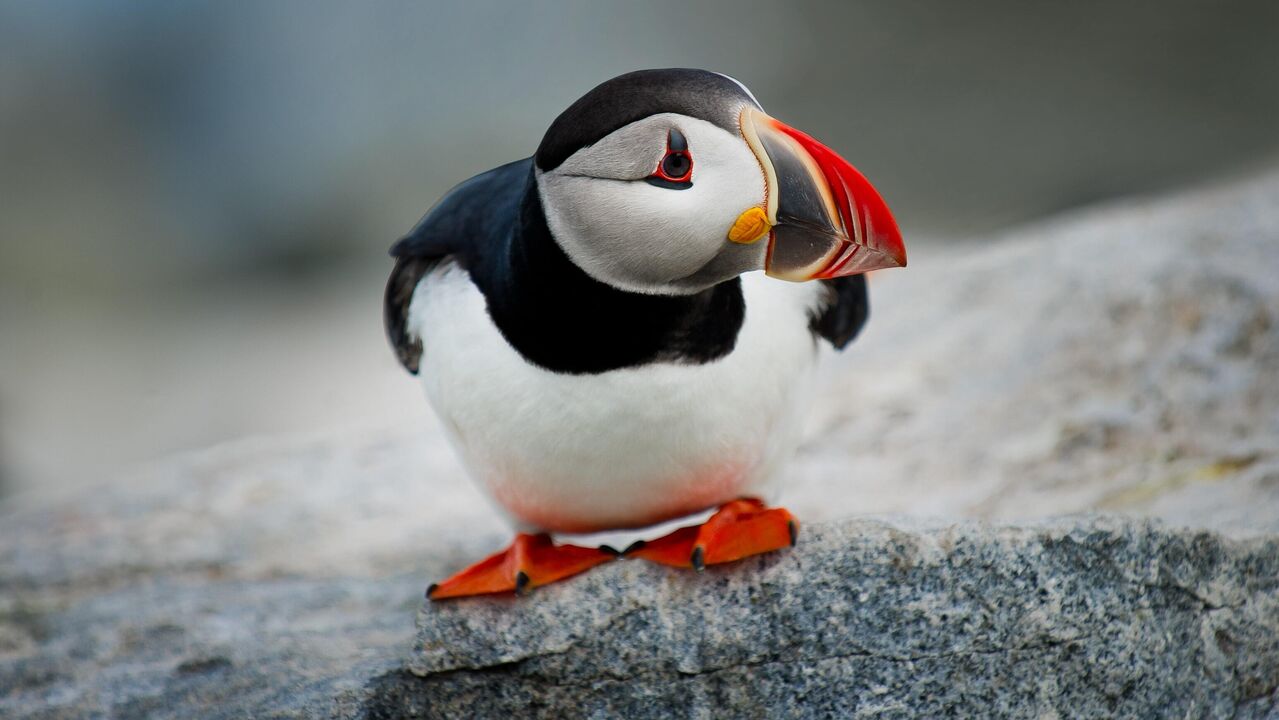
This adorable black and white seabird with a bright orange and yellow beak is the official bird of Newfoundland. Puffins mate for life and hatch their chicks in cliffside burrows, which makes them easy to spot between May and September when they return to their nesting sites along the province’s craggy coast.
Watch for puffin on the Fogo and Brimstone experience.
Orca
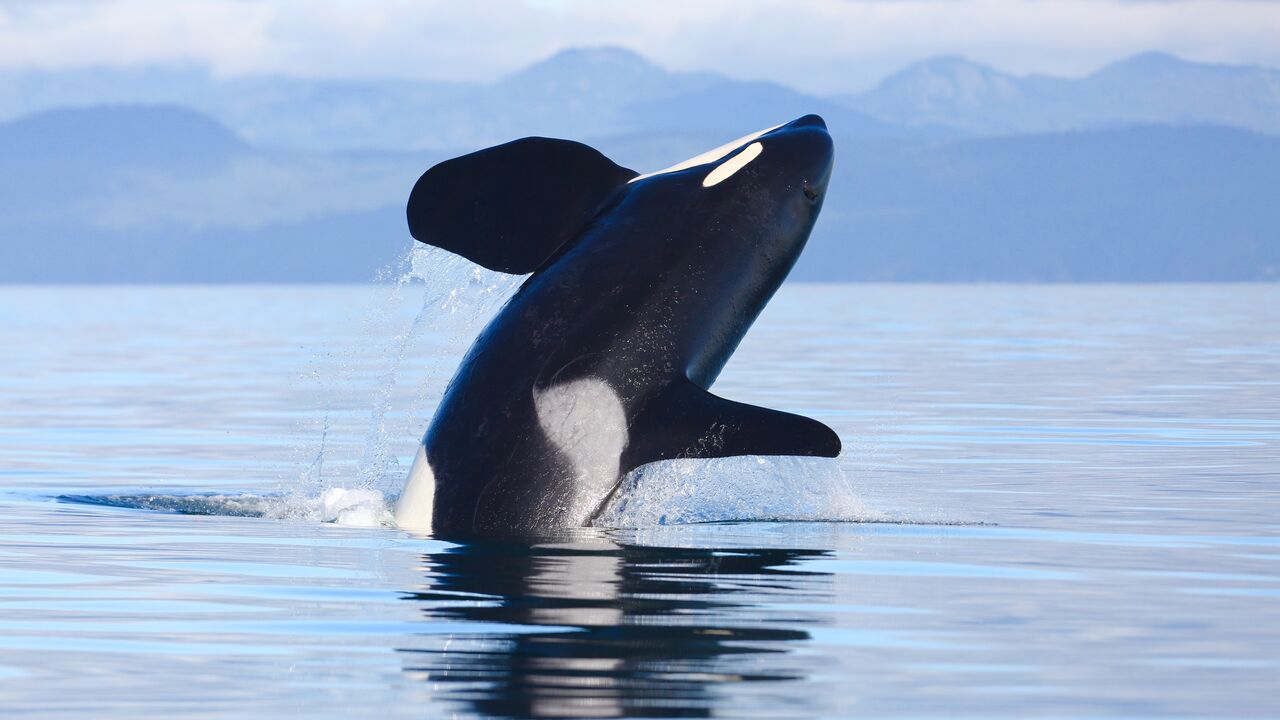
This distinctive aquatic mammal is called a killer whale, but it’s actually the largest species of the dolphin family. Though orcas live in three oceans, the best place to see one is in the Salish Sea (between Vancouver Island and the mainland B.C. coast) on a boat tour in the spring or summer.
Watch for Orca on the Laidback Luxury in Tofino experience.
Musk Ox
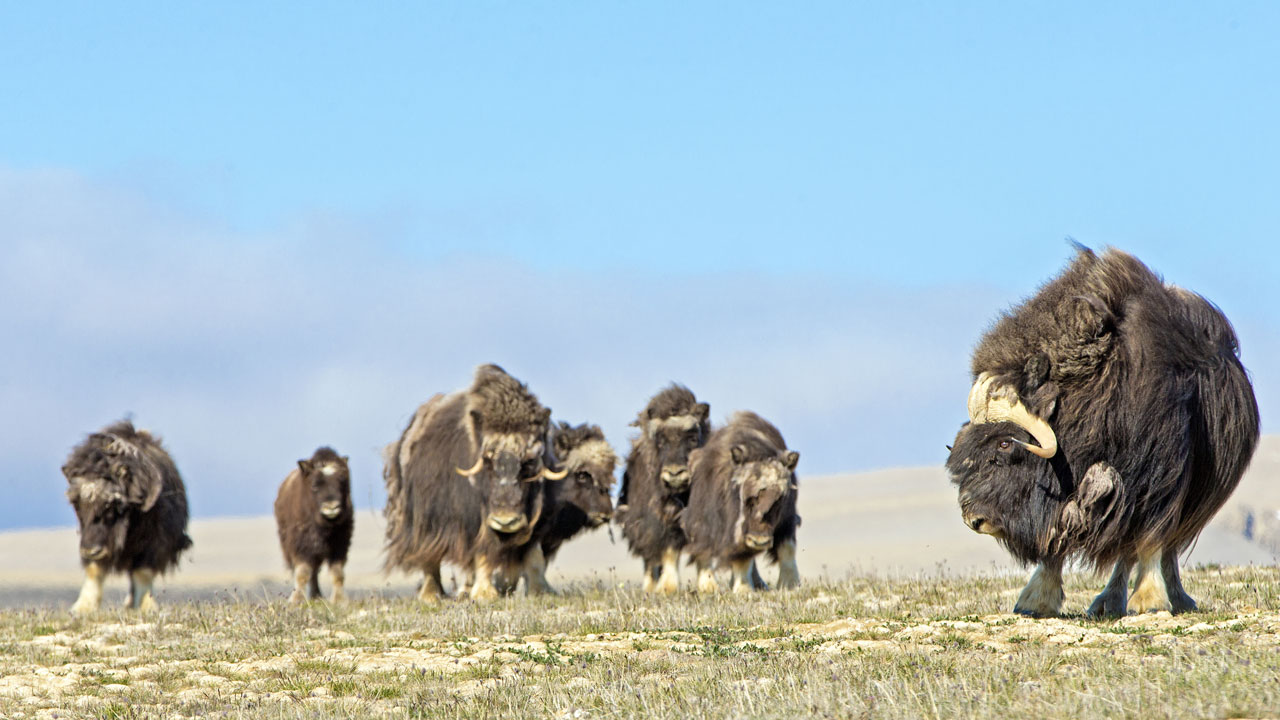
With a helmet of horns and a wild wooly coat, musk oxen look a bit like wildebeests that lost their way. But get close to one of these burly hoofed beasts in Canada’s high arctic and his strong musky odor (emitted during mating season in the fall) will let you know it’s definitely a musk ox!
Watch for musk ox on the Arctic Watch experience.